
Inverclyde is one of 32 council areas used for local government in Scotland. Together with the East Renfrewshire and Renfrewshire council areas, Inverclyde forms part of the historic county of Renfrewshire, which currently exists as a registration county and lieutenancy area – located in the west central Lowlands. It borders the North Ayrshire and Renfrewshire council areas, and is otherwise surrounded by the Firth of Clyde.

Greenock is a town and administrative centre in the Inverclyde council area in Scotland and a former burgh within the historic county of Renfrewshire, located in the west central Lowlands of Scotland. It forms part of a contiguous urban area with Gourock to the west and Port Glasgow to the east.
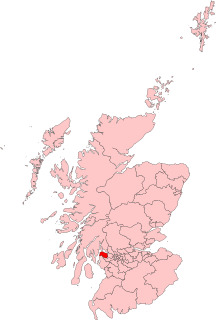
Inverclyde is a parliamentary constituency of the House of Commons of the Parliament of the United Kingdom. It replaced Greenock and Inverclyde and the Port Glasgow and Kilmacolm areas from West Renfrewshire for the 2005 general election.
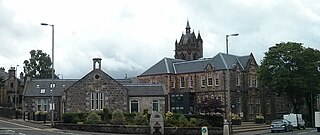
Kilmacolm is a village and civil parish in the Inverclyde council area, and the historic county of Renfrewshire in the west central Lowlands of Scotland. It lies on the northern slope of the Gryffe Valley, 7+1⁄2 miles southeast of Greenock and around 15 miles (24 km) west of the city of Glasgow. The village has a population of around 4,000 and is part of a wider civil parish which covers a large rural hinterland of 15,000 hectares containing within it the smaller settlement of Quarrier's Village, originally established as a 19th-century residential orphans' home.
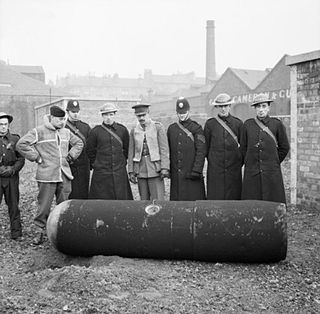
The Greenock Blitz is the name given to two nights of intensive bombing of the town of Greenock, Scotland by the Nazi German Luftwaffe during the Second World War. The raids over the nights of the 6 and 7 May 1941 targeted the shipyards and berthed ships around the town. The brunt of the bombing fell on residential areas. Over the two nights, 271 people were killed and over 10,200 injured. From a total of 180,000 homes nearly 25,000 suffered damage and 5,000 were destroyed.

Newark Castle is a well-preserved castle sited on the south shore of the estuary of the River Clyde in Port Glasgow, Inverclyde, Scotland, where the firth gradually narrows from the Firth of Clyde and navigation upriver is made difficult by shifting sandbanks. For centuries this location was used to offload seagoing ships, and led to the growth of Port Glasgow close to the castle on either side and to the south. When dredging techniques made the Clyde navigable as far as Glasgow the port became a shipbuilding centre, and the castle was surrounded by shipyards. Ferguson Shipbuilders, the last shipyard on the lower Clyde, stands close to the west of the castle, but the shipyards to the east were removed around the 1980s and new landscaped areas formed to the east of Newark Castle, opening up scenic views of the castle and across the Clyde from a new bypass road.

Greenock West railway station is a station in Greenock, Scotland, located on the Inverclyde Line which runs from Gourock to Glasgow Central. The route is currently operated by ScotRail under the auspices of Strathclyde Partnership for Transport. Each service to and from Glasgow on the Inverclyde Line stops at this station.

Paisley Gilmour Street railway station is the largest of the four stations serving the town of Paisley, Renfrewshire, Scotland, and acts as the town's principal railway station. The station is managed by ScotRail and serves the Ayrshire Coast Line and Inverclyde Line, 7+1⁄4 miles (11.7 km) west of Glasgow Central. The station is protected as a category B listed building.
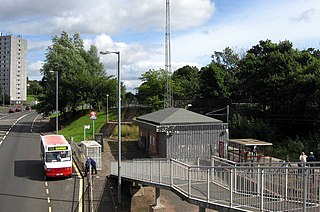
Branchton railway station is a railway station in Scotland opened in 1967 under British Rail located in the south-west of the town of Greenock, beside the area called Branchton. The station is on the Inverclyde Line, 24¾ miles (40 km) west of Glasgow Central. The station is managed by ScotRail.
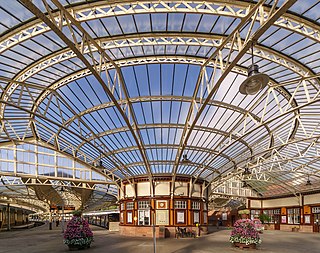
Wemyss Bay railway station serves the village of Wemyss Bay, Inverclyde, Scotland. The station is a terminus on the Inverclyde Line, about 26 miles (42 km) west of Glasgow Central. The station incorporates the Caledonian MacBrayne ferry terminal connecting mainland Scotland to Rothesay on the Isle of Bute. The station is managed by ScotRail.

Greenock and Inverclyde is a constituency of the Scottish Parliament (Holyrood) covering most of the council area of Inverclyde. It elects one Member of the Scottish Parliament (MSP) by the first past the post method of election. It is also one of ten constituencies in the West Scotland electoral region, which elects seven additional members, in addition to the ten constituency MSPs, to produce a form of proportional representation for the region as a whole.

Castle Levan is a fortified tower house in Levan area of Gourock, Inverclyde, Scotland.

The McLean Museum and Art Gallery is a museum and art gallery situated in Greenock, Inverclyde, Scotland. It is the main museum in the Inverclyde area, it is free to visit and was opened in 1876. Most notably it features an exhibition of items related to James Watt, the Greenock-born inventor, a Mummy Cartonnage from Herakleopolis Magna and a collection of British and Scottish art. The principal entrance to the museum is on Kelly Street, in the Greenock West area. The former Curator is Val Boa. The Watt Institution includes the Art Gallery, Watt Hall, Watt Library and Inverclyde Archives.

The 2011 by-election in Inverclyde took place on 30 June 2011. It was triggered by the death of the incumbent Labour MP, David Cairns on 9 May 2011 of acute pancreatitis.

Ardgowan House is a late 18th-century mansion and estate on the Firth of Clyde near Inverkip, Scotland. Ardgowan is located in Inverclyde, in the former county of Renfrewshire. The Ardgowan estate has been held by the Stewart family since the early 15th century: towards the end of that century, their tower house Ardgowan Castle was built within the site of the previous Inverkip Castle fortress. The present house was erected in 1797 and completed in 1801 from designs by Cairncross. It is the seat of the Shaw Stewart baronets, currently Sir Ludovic Houston Shaw Stewart, 12th Baronet of Greenock and Blackhall.
Duchal House is an 18th-century mansion and estate near Kilmacolm, Scotland. It is located in Inverclyde, in the former county of Renfrewshire. Duchal was acquired by the Porterfield family in the 16th century. The present house was built in 1710 and extended in 1768. It was owned by Lord Maclay until 2018. The house is protected as a category A listed building, and the grounds are included in the Inventory of Gardens and Designed Landscapes in Scotland, the national listing of significant gardens.

The Watt Library or Watt Monument Library in Greenock, Scotland, opened on its current site in 1837 and was the direct descendant of the Greenock Library, a subscription library founded in 1783. It closed as a subscription library in 1971 and re-opened as a public facility in 1973 under the name of the Watt Library, specialising in Local History and Archives. The building was designed in the Gothic revival style by architect Sir Edward Blore and is a listed building. It has undergone recent refurbishment and re-opened in November 2019 as the Watt Institution, incorporating the McLean Museum Watt Lecture Hall and Inverclyde Archives.

The Municipal Buildings are based in Shore Street, Gourock, Inverclyde, Scotland. The structure, which is used as a business centre, is a Category C listed building.
















